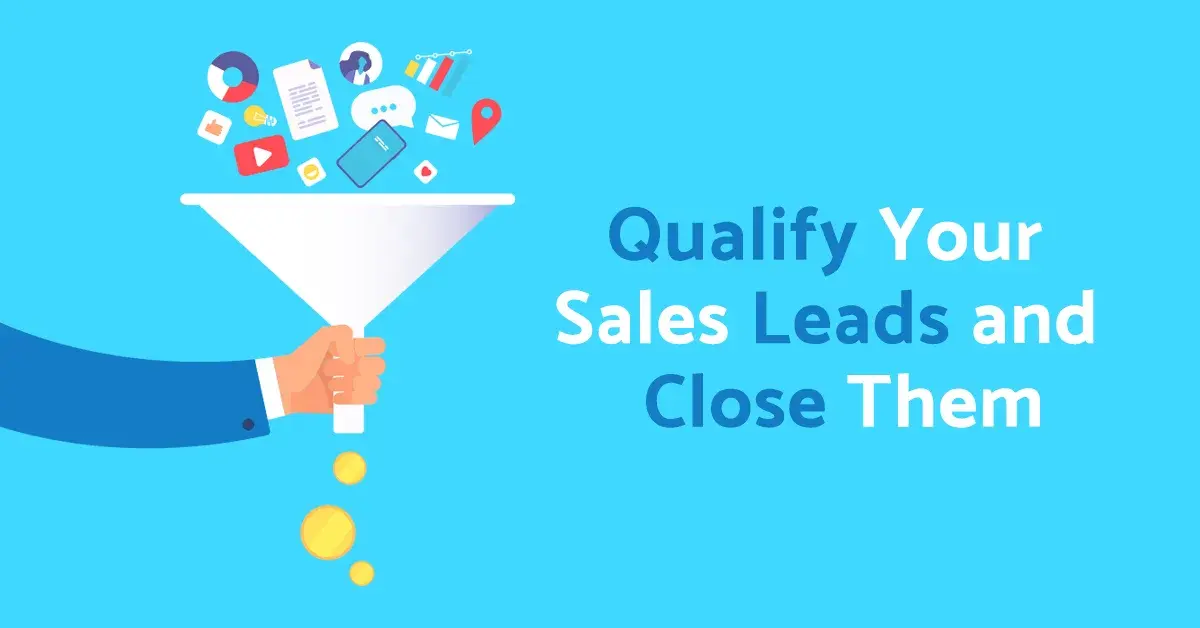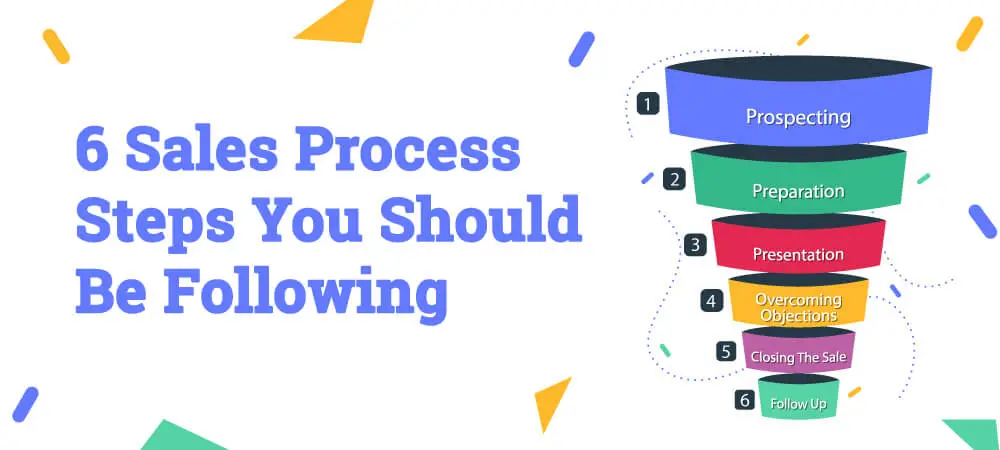Qualify leads in the sales process
Qualify leads in the sales process, With a plethora of leads coming in, it is crucial for sales teams to efficiently prioritize their efforts towards leads with the highest potential for conversion. Lead qualification is the process of assessing and categorizing leads based on their likelihood to make a purchase. By implementing a strategic approach to qualifying leads, sales teams can effectively focus their resources and energy on leads that are most likely to result in successful sales, thus maximizing productivity and revenue generation.
Key Takeaways:
- Establish clear criteria: Define key parameters such as budget, timeline, and decision-making authority to qualify leads effectively.
- Use lead scoring: Assign values to different actions or attributes to prioritize leads based on their level of interest and engagement.
- Utilize technology: Implement CRM systems and marketing automation tools to track lead interactions and gather data for lead qualification.
- Qualify based on fit: Assess whether the lead aligns with your ideal customer profile in terms of industry, company size, and pain points.
- Effective communication: Ask targeted questions, actively listen to responses, and provide tailored solutions to understand the lead’s needs and qualify them accordingly.
Understanding Lead Qualification
Definition and Purpose
Any successful sales process begins with lead qualification. This important step involves evaluating potential customers to determine their likelihood of making a purchase. The purpose of lead qualification is to prioritize and focus on those leads that are most likely to convert into paying customers, saving time and resources in the sales funnel.
The Benefits of Proper Lead Qualification
Benefits of proper lead qualification are manifold. By qualifying leads effectively, sales teams can target their efforts towards prospects who are ready to buy, resulting in higher conversion rates and increased sales. Proper lead qualification also helps in identifying the unique needs and pain points of each lead, allowing for more personalized and targeted sales approaches that resonate with the prospect.
Purpose of lead qualification is not just to identify potential customers but also to disqualify those who are not a good fit for the product or service offered. This ensures that sales efforts are not wasted on leads that are unlikely to convert, allowing for a more efficient sales process with a higher return on investment.

Lead Qualification Techniques
BANT (Budget, Authority, Need, Timeframe)
Some of the most widely used lead qualification techniques in the sales process include the BANT framework. BANT stands for Budget, Authority, Need, and Timeframe. This method helps sales representatives assess whether a lead is worth pursuing by evaluating if the lead has the budget to make a purchase, the authority to make a decision, the need for the product or service, and the timeframe for making a decision.
CHAMP (Challenges, Authority, Money, Prioritization)
Lead qualification can also be done using the CHAMP framework, which stands for Challenges, Authority, Money, and Prioritization. This method focuses on understanding the challenges the lead is facing, identifying the decision-makers in the buying process, determining the budget available for the purchase, and gauging the lead’s prioritization of the problem to be solved.
The CHAMP framework goes beyond just assessing the lead’s financial capabilities and decision-making power. It probes into the specific challenges the lead is encountering, allowing sales professionals to tailor their approach and pitch to address those pain points directly. By understanding the lead’s priorities and constraints, sales reps can position their product or service as the ideal solution to meet the lead’s needs.
The qualification techniques like BANT and CHAMP are imperative tools for sales teams to effectively prioritize their leads and focus on those with the highest probability of closing a deal. By systematically evaluating leads based on these criteria, sales representatives can efficiently allocate their time and resources towards leads that are more likely to convert, ultimately leading to higher sales success rates.
Implementing Lead Qualification in Your Sales Strategy
Setting Qualification Criteria
Strategy is crucial when setting qualification criteria for leads in your sales process. This involves determining specific attributes and behaviors that indicate a lead is more likely to make a purchase. Consider factors such as budget, authority, need, timeline, and fit to ensure that your sales team focuses on leads with the highest potential for conversion.
Integrating Techniques into the Sales Funnel
An effective sales strategy involves integrating lead qualification techniques into every stage of the sales funnel. This means using qualifying questions and scoring systems to assess leads as they progress through the sales process. By incorporating lead scoring, segmentation, and personalized messaging, you can better tailor your sales approach and prioritize leads that are more likely to convert into customers.
Qualification
Qualification is a continuous process that requires constant evaluation and adjustment to ensure your sales team is spending their time and resources on the most promising leads. By integrating lead qualification techniques into your sales strategy, you can improve efficiency, boost conversion rates, and ultimately drive more revenue for your business.
Advanced Lead Qualification Strategies
- Leads Prioritization Table
Lead Source Analysis Table
Leveraging Lead Scoring Systems
Leveraging lead scoring systems can greatly enhance the efficiency of your sales process by identifying the most qualified leads based on their behaviors and interactions with your company. By assigning numerical values to various lead attributes, you can prioritize follow-up efforts and focus your resources on leads with the highest likelihood of conversion.
Utilizing Predictive Analytics
By utilizing predictive analytics, you can take your lead qualification process to the next level. Predictive analytics uses data, statistical algorithms, and machine learning techniques to identify patterns and predict future outcomes based on historical data. This allows you to proactively target leads that are more likely to convert, ultimately increasing your sales success rate.
It provides a deeper insight into the potential of each lead, enabling you to tailor your sales approach accordingly and personalize your interactions to increase engagement and conversions. By harnessing the power of predictive analytics, you can stay ahead of the competition and maximize the effectiveness of your lead qualification efforts.
Nurturing and Follow-Up
Managing Unqualified Leads
To ensure a streamlined sales process, it is crucial to manage unqualified leads effectively. Identify the reasons why leads do not meet your qualification criteria and categorize them accordingly. By keeping track of these leads, you can revisit them in the future if their circumstances change or if your criteria evolve. It is necessary to maintain open communication with unqualified leads to build rapport and keep your brand top of mind.
Strategies for Effective Follow-Up
Managing follow-up strategies is necessary for converting leads into customers. Develop a systematic approach to follow up with leads promptly and consistently. Incorporate a mix of communication channels, such as phone calls, emails, and personalized messages, to stay engaged with leads. Personalize your follow-up communications based on the lead’s previous interactions with your brand to show genuine interest and value their time and needs.
Follow-up should be strategic and persistent without crossing into spam or becoming overly aggressive. Set clear timelines for follow-up actions and be prepared to adapt your approach based on the lead’s responses or behavior. Utilize customer relationship management (CRM) tools to automate and track follow-up activities, ensuring no lead falls through the cracks.
To wrap up
With this in mind, qualifying leads is a crucial step in the sales process to ensure that your sales team is focusing their efforts on leads that have the highest potential to convert into customers. By using proven methods like lead scoring, understanding your ideal customer profile, effective communication, utilizing technology, and incorporating feedback loops, you can streamline your sales process and increase your conversion rates. For more in-depth information on qualifying leads.
“Qualify leads in the sales process” I am sure would have helped you take a note on qualifying leads, also read 6 Steps to build Sales Process – Pulse Business
If you like the content please support us on Instagram







